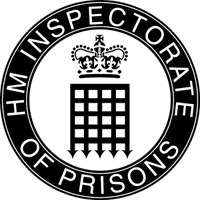Inspection report finds a number of serious concerns at IRC near Gatwick
HM Inspectorate of Prisons (HMI Prisons) last week released a new inspection report of Brook House Immigration Removal Centre (IRC) near Gatwick airport.
 Image credit: UK GovernmentThe 67-page inspection report can be downloaded here.
Image credit: UK GovernmentThe 67-page inspection report can be downloaded here.
Overall, HMI Prisons' inspection finds Brook House provided decent standards of care, but a number of serious concerns are identified. Of particular concern was the slow progress of detainees' cases and the length of time that some people had been held in immigration detention.
HMI Prisons found five detainees at Brook House who had been locked in immigration detention for more than two-and-a-half years in total, including time at other IRCs or prisons. The longest period of detention at Brook House itself was over 16 months, which HMI Prisons called "unacceptably long". Delays obtaining travel documents and a lack of bail accommodation contributed to lengthy detention.
At the time of HMI Prisons' inspection, Brook House was holding 68 detainees who had received a notice of intent by the Home Office informing them that that they were considered eligible for removal to Rwanda. Nineteen of the detainees were served with removal directions for the flight to Rwanda that was scheduled for 14 June and subsequently cancelled. The experiences of the detainees highlighted problems detainees had accessing legal advice at Brook House.
The report notes: "Detainees could access half an hour of free legal advice through weekly surgeries. The Home Office's detention engagement team was now routinely speaking to detainees face-to-face, but many detainees complained about a lack of meaningful new information in case updates and difficulties in obtaining answers to their ad hoc queries. The planned return of unit surgeries was a welcome step that could help address these issues. Detainees who were due to be relocated to Rwanda could not easily obtain legal representation, communicate with their representatives or gain a sufficient understanding of the process in the seven-day window provided to reply to the notice of intent."
HMI Prisons found the information that had been provided to detainees facing removal to Rwanda was of little value.
The report continued: "Detainees due to be removed to Rwanda were anxious for more information. The Home Office held two poorly organised surgeries, where no interpreters were used. Translated versions of two information leaflets were not sent to detainees until after their removal directions had been issued. Both leaflets provided little useful information about the removal process and what to expect on arrival. The Home Office was not aware of a detainee who said that he could not read in any language and had not understood the documents he received."
In all of the individual cases examined by HMI Prisons, detainees had not replied to their notice of intent within the required seven-day window or before the decision to issue removal directions.
One detainee told HMI Prisons inspectors that he did not know that he might be sent to Rwanda until he spoke to a lawyer. Another described escalating panic due to being unable to speak to a lawyer as the seven-day window to respond to the notice of intent drew to a close.
In the report's introduction, Charlie Taylor, the Chief Inspector of Prisons, said the overall slowness by the Home Office when processing cases at Brook House had caused much frustration, anger and anxiety among detainees.
HMI Prisons noted in the report, for example: "In [some] cases, the Home Office had taken too long to begin and progress deportation. The Home Office also sometimes took too long to consider detained asylum claims (claims that are made by individuals held in detention). In one case, it took almost a year to resolve a claim for a man held in detention, and in another it took over a month for a detainee to have an initial screening interview after making an asylum claim. Long waits for [emergency travel documents] also prolonged periods of detention. In one instance, there was no recorded progress on obtaining travel documents for 11 months, and the detainee involved had been held in a prison for this duration. The detainee who had been held for 16 months continued to be detained despite the Home Office having failed to secure an agreement from his home country to remove him."
More generally, the inspection found Brook House was prison-like, noisy and crowded, and it had limited outdoor space. It did not provide an open or relaxed environment suitable for immigration detainees.
The use of force by staff was high, though the report adds that most cases involved a minimal level of force and there had been no serious injuries. The identification and management of risks among detainees on arrival was not good enough, and there was a failure to fully protect detainees who had conditions that might have been worsened by detention.
The assessment and care for detainees at risk of suicide or self-harm was also criticised for not being good enough, and inspectors found Brook House did not meet the needs of the high number of detainees with mental health problems.
Charlie Taylor said: "Leaders have worked to make sure that the general standards of care and accommodation at Brook House are reasonably good and the treatment by staff is mostly positive. The Home Office will need to be more active, processing cases more quickly, keeping detainees informed and where possible releasing them into the community. A reduction in the overall numbers of detainees would mean the centre would feel safer and quieter and there could be more activities on offer."